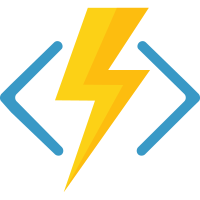| Branch | Status |
|---|---|
| main | |
| release/1.x |
Welcome to the Azure Functions .NET Worker Repository. The .NET Worker provides .NET 5 support in Azure Functions, introducing an Isolated Model, running as an out-of-process language worker that is separate from the Azure Functions runtime. This allows you to have full control over your application's dependencies as well as other new features like a middleware pipeline.
A .NET Isolated function app works differently than a .NET Core 3.1 function app. For .NET Isolated, you build an executable that imports the .NET Isolated language worker as a NuGet package. Your app includes a Program.cs that starts the worker.
.NET Isolated introduces a new binding model, slightly different from the binding model exposed in .NET Core 3 Azure Functions. More information can be found here. Please review our samples for usage information.
The Azure Functions .NET Isolated supports middleware registration, following a model similar to what exists in ASP.NET and giving you the ability to inject logic into the invocation pipeline, pre and post function executions.
You can find samples on how to use different features of the .NET Worker under samples (link).
Note: Visual Studio and Visual Studio Code support is on the way. In the meantime, please use azure-functions-core-tools or the sample projects as a starting point.
Download .NET 5.0 from here
Please make sure you have Azure Functions Core Tools >= 3.0.3388.
To download, please check out our docs at Azure Functions Core Tools
In an empty directory, run func init and select dotnet (Isolated Process).
Run func new and select any trigger (HttpTrigger is a good one to start). Fill in the function name.
Run func host start in the sample app directory.
Note: If you selected a trigger different from HttpTrigger, you may need to setup local connection strings or emulator for the trigger service.
Release candidate instructions. Requires RC packages
NOTE: To debug your Worker, you must be using the Azure Functions Core Tools version 3.0.3381 or higher
In your worker directory (or your worker's build output directory), run:
func host start --dotnet-isolated-debug
Core Tools will run targeting your worker and the process will stop with the following message:
Azure Functions .NET Worker (PID: <process id>) initialized in debug mode. Waiting for debugger to attach...
Where <process id> is the ID for your worker process.
At this point, your worker process wil be paused, waiting for the debugger to be attached. You can now use Visual Studio to manually attach to the process (to learn more, see how to attach to a running process)
Once the debugger is attached, the process execution will resume and you will be able to debug.
YOU CANNOT DEBUG USING "Start Debugging" IN VISUAL STUDIO DIRECTLY. You need to use the command line as mentioned in the Run functions locally part of this readme.
We're working with the Visual Studio team to provide an integrated debugging experience.
-
To deploy the app, first ensure that you've installed the Azure CLI.
-
Login to the CLI.
az login
-
If necessary, use
az account setto select the subscription you want to use. -
Create a resource group, Storage account, and Azure Functions app. If you would like to use an existing Windows .NET Core 3 function app, please skip this step.
az group create --name AzureFunctionsQuickstart-rg --location westeurope az storage account create --name <STORAGE_NAME> --location westeurope --resource-group AzureFunctionsQuickstart-rg --sku Standard_LRS az functionapp create --resource-group AzureFunctionsQuickstart-rg --consumption-plan-location westeurope --runtime dotnet-isolated --functions-version 3 --name <APP_NAME> --storage-account <STORAGE_NAME>
-
Ensure you're in your functions project folder.
-
Deploy the app.
func azure functionapp publish <APP_NAME>
- Optimizations are not all in place in the consumption plan and you may experience longer cold starts.
Please create issues in this repo. Thanks!
This project welcomes contributions and suggestions. Most contributions require you to agree to a Contributor License Agreement (CLA) declaring that you have the right to, and actually do, grant us the rights to use your contribution. For details, visit https://cla.opensource.microsoft.com.
When you submit a pull request, a CLA bot will automatically determine whether you need to provide a CLA and decorate the PR appropriately (e.g., status check, comment). Simply follow the instructions provided by the bot. You will only need to do this once across all repos using our CLA.
This project has adopted the Microsoft Open Source Code of Conduct. For more information see the Code of Conduct FAQ or contact [email protected] with any additional questions or comments.
